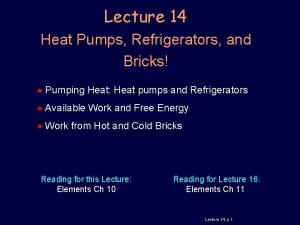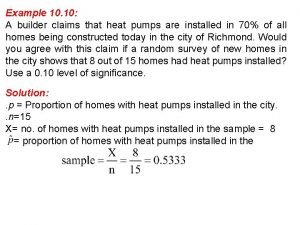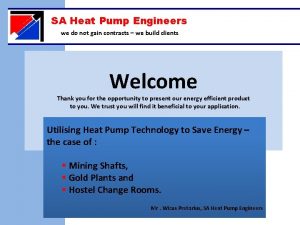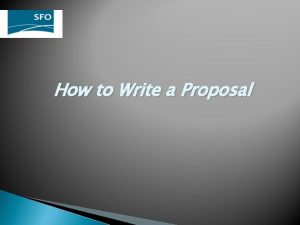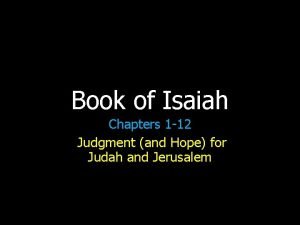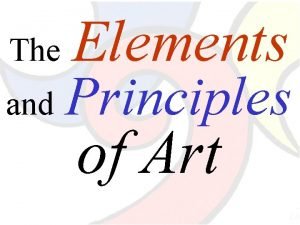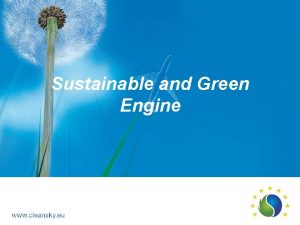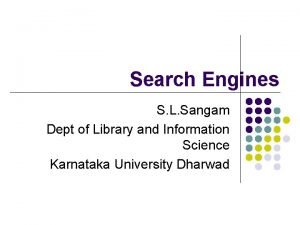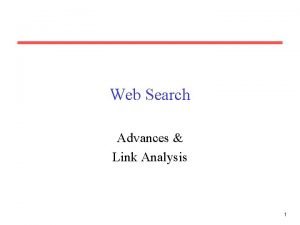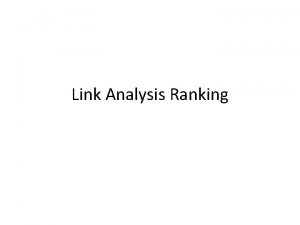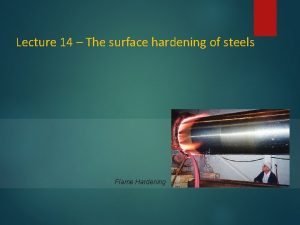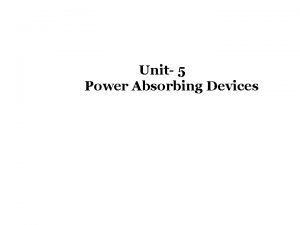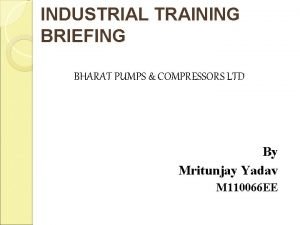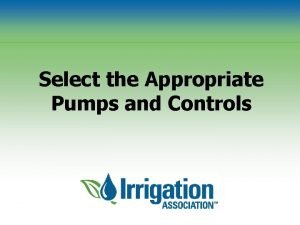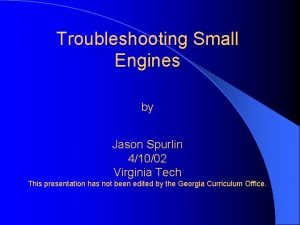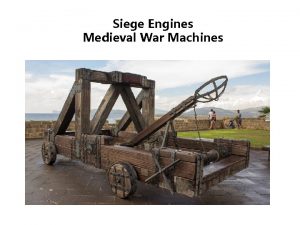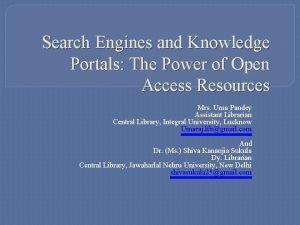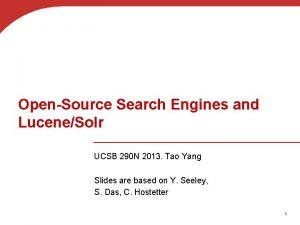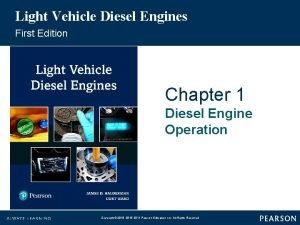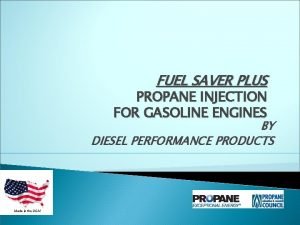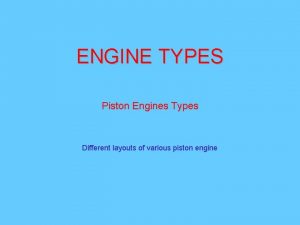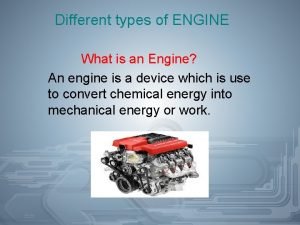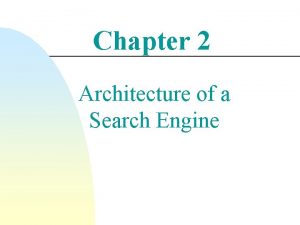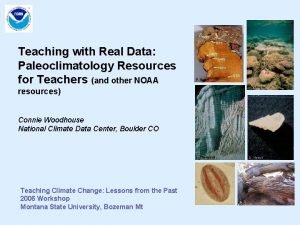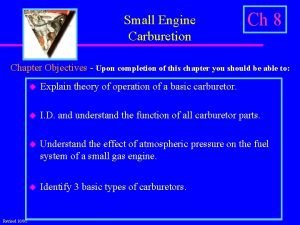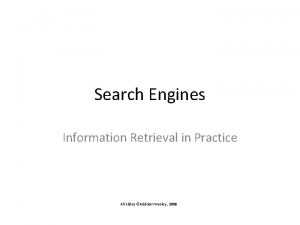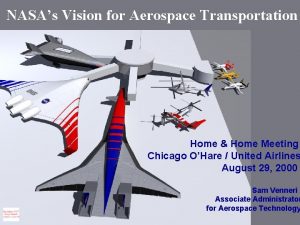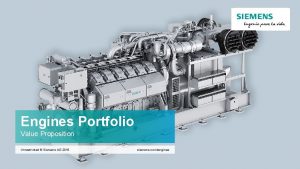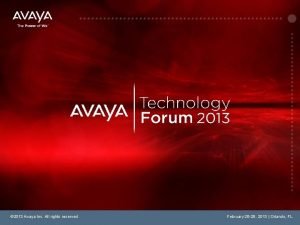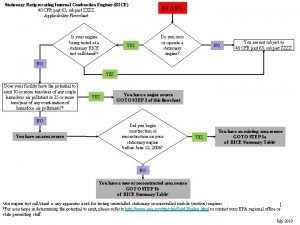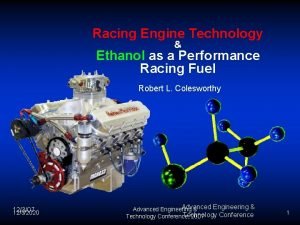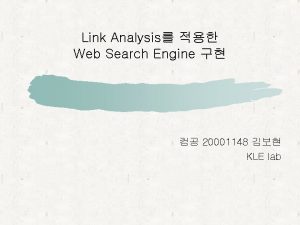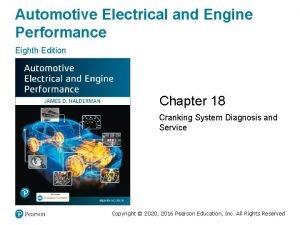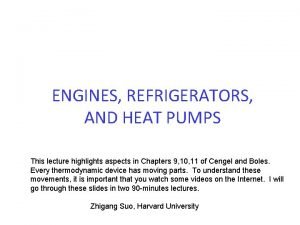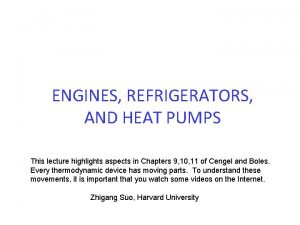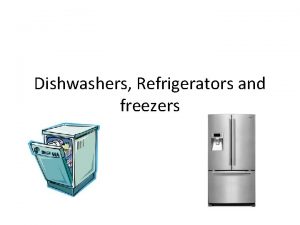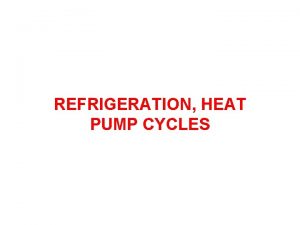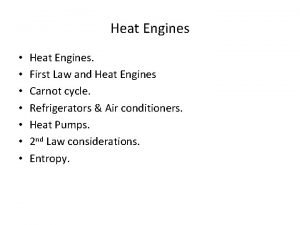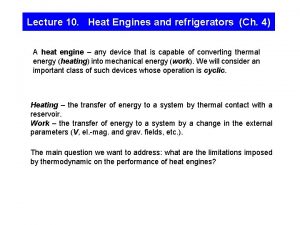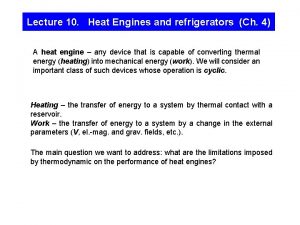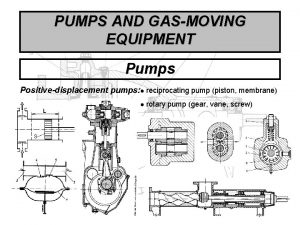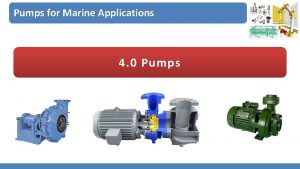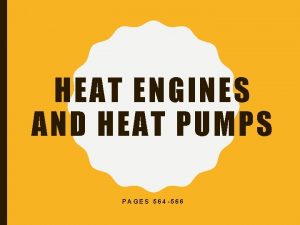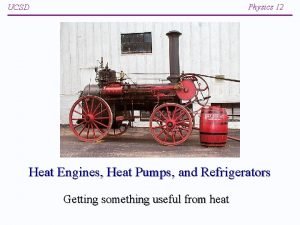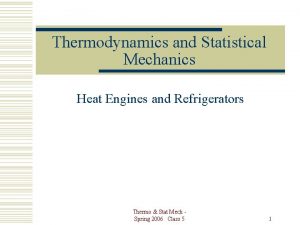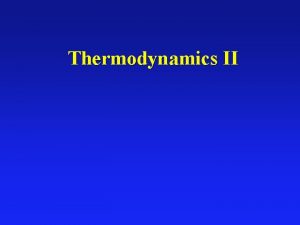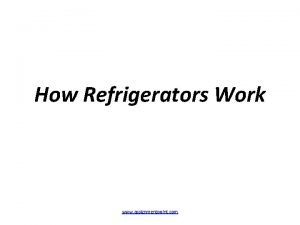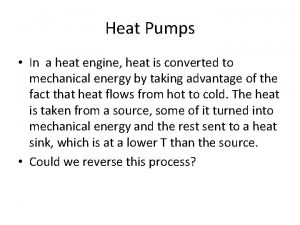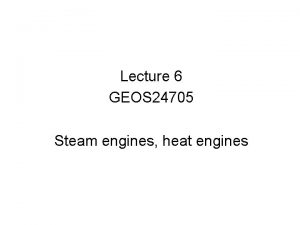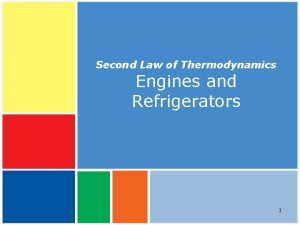ENGINES REFRIGERATORS AND HEAT PUMPS This lecture highlights













































- Slides: 45

ENGINES, REFRIGERATORS, AND HEAT PUMPS This lecture highlights aspects in Chapters 9, 10, 11 of Cengel and Boles. Every thermodynamic device has moving parts. To understand these movements, it is important that you watch some videos on the Internet. I will go through these slides in two 90 -minutes lectures. Zhigang Suo, Harvard University

How humans tell each other something? • • The thing itself Pictures Words Equations • • Language Books Movies The Internet 2

Thermodynamics = heat + motion Too many devices to classify neatly • Fuel (input): biomass, fossil, solar thermal, geothermal, nuclear, electricity. • Application (output): mobile power plant (transpiration in air, land, sea), stationary power plant (electricity generation), refrigerator, heat pump. Power cycle, refrigeration cycle. • Working fluid: Gas cycle (air), vapor cycle (steam, phase change). • Fluid-solid coupling: piston engine (reciprocating, crankshaft), turbine engine (jet, compressor). • Site of burning: external combustion, internal combustion. 3

Plan • • • Internal combustion engines Gas turbines Stirling and Ericsson engines Vapor power cycle Refrigeration cycle 4

Combustion engine burns to move BOILER STEAM WATER Fayette Internal Combustion Engiine I COMBUSTION CHAMBER PISTON External combustion engine • • • Steam engine Stirling engine Ericsson engine Internal combustion engine (ICE) • • Otto (gasoline) engine Diesel engine Gas turbine Jet propulsion US Navy Training Manual, Basic Machines 5

Reciprocating engine also known as piston engine, converts linear motion to rotation CYLINDER PISTON CONNECTING ROD CRANKSHAFT US Navy Training Manual, Basic Machines 6

fuel-air mixture entering cylinder air entering exhaust valve closed fuel-air mixture being compressed both valves closed Fuel discharging intake from nozzle valve open piston moving down piston moving up valve tappet lifting valve cam lobe lifting valve tappet 1 cycle 4 strokes 2 revolutions INTAKE STROKE spark igniting mixture COMPRESSION STROKE both valves closed exhaust valve open intake valve closed Animated engines http: //www. animatedengines. com/ piston moving up piston moving down valve tappet lifting valve cam lobe lifting valve tappet 7 US Navy Training Manual, Basic Machines POWER STROKE EXHAUST STROKE

Spark-ignition engine (gasoline engine, petrol engine, Otto engine) 8

Air-standard assumptions 1. 2. 3. 4. Model the engine as a closed system, and the working fluid as air (an ideal gas). The cycle is internally reversible. Model combustion by adding heat from an external source Model exhaust by rejecting heat to an external sink 9

Cold air-standard assumption Model air as an ideal gas of constant specific heat at room temperature (25°C). 2 independent variables to name all states of thermodynamic equilibrium 6 functions of state: PTvush 4 equations of state Gibbs equation 10

Thermal efficiency of Otto cycle Compression ratio: Conservation of energy: Isentropic processes: Thermal efficiency: wout win 11

Otto cycle represented in planes of different variables s 3 4 qin 2 qout 1 v 12

Reciprocating engines of two types Spark-ignition engine (Otto, 1876) Compression-ignition engine (Diesel, 1892) https: //ccrc. kaust. edu. sa/pages/HCCI. aspx 13

Compression-ignition engine (Diesel engine) compression ratio: cut-off ratio: Conservation of energy: Isentropic processes Thermal efficiency: 14

Plan • • • Internal combustion engines Gas turbines Stirling and Ericsson engines Vapor power cycle Refrigeration 15

Gas turbine (Brayton cycle) 4 steady-flow components: isobaric and isentropic P qin 3 2 1 4 qout 16 s

Thermal efficiency of Brayton cycle Definition of pressure ratio: Conservation of energy: Isentropic processes: Thermal efficiency: 17

Brayton cycle has large back work ratio win wout 18

Intercooling, reheating, regeneration 19

Gas turbine for jet propulsion Thousands of years of history Who invented this? Hero of Alexandria (first century AD) http: //www. techknow. org. uk/wiki/index. php? title=File: Hero_4. jpg Frank Whittle (UK), Hans von Ohain (Germany) (during World War II) 20

Gas turbine for jet propulsion 6 steady-flow components Propulsive force: Propulsive power: Propulsive efficiency: 21

http: //www. ae. utexas. edu/~plv 955/class/propulsion/Cp_air. GIF 22

Air as an ideal gas of variable specific heat See section 7. 9 for the use of this table 23

Plan • • • Internal combustion engines Gas turbines Stirling and Ericsson engines Vapor power cycle Refrigeration cycle 24

Displacer-type Stirling engine https: //www. stirlingengine. com/faq/ 25

Stirling engine and regenerator (1816) reversible cycle between two fixed temperatures, having the Carnot efficiency 26 https: //people. ok. ubc. ca/jbobowsk/Stirling/how. html

Stirling vs. Carnot for given limits of volume, pressure, and temperature • On PV plane, the black area represents the Carnot cycle, and shaded areas represent addition work done by the Stirling cycle. • On TS plane, the black area represents the Carnot cycle, and the shaded areas represent additional heat taken in by the Stirling cycle. • The Stirling cycle and the Carnot cycle have the same thermal efficiency. • The Stirling cycle take in more heat and give more work than the Carnot cycle. Walker, Stirling Engine, 1980. 27

Work out by Stirling cycle Specific work Specific gas constant Gas Formula Air R (k. J/kg. K) 0. 2870 Steam H 2 O 0. 4615 Ammonia NH 3 0. 4882 Hydrogen H 2 4. 124 Helium He 2. 077 28

Ericsson engine with regenerator (1853) reversible cycle between two fixed temperatures, having the Carnot efficiency 29

Plan • • • Internal combustion engines Gas turbines Stirling and Ericsson engines Vapor power cycle Refrigeration cycle 30

Coal power station coverts coal to electricity 31

Brayton Point Power Station Sommerset, Massachusetts Mount Hope Bay http: //www. clf. org/blog/clean-energy-climate-change/brayton-point-retirement-means-game-coal-new-england/ 32

Nuclear power station converts uranium to electricity Animation https: //www. awesomestories. com/images/user/be 4285 df 4 b. gif 33 http: //www. nuclear-power. net/nuclear-power-plant/

Nine Mile Point Nuclear Power Plant, New York Lake Ontario Cooling tower 34

Why water? Why steam? • • Water is cheap. Water flows! Water is a liquid at the temperature of heat sink (rivers, lakes, . . . ). Vaporization changes specific volume greatly: a lot of work at relatively low pressure. https: //www. ohio. edu/mechanical/thermo 35

Rankine cycle 4 steady-flow components: isobaric and isentropic wpump, in = h 2 - h 1 qboiler, in = h 3 - h 2 wturbine, out = h 3 – h 4 qcondenser, out = h 4 – h 1 P 2 qboiler, in 3 wturbine, out wpumo, in 1 qcondenser, out 4 s 36

Rankin cycle has small back work ratio 37

Carnot cycle is unsuitable as vapor power cycle Issues with the in-dome Carnot cycle Process 1 -2 limits the maximum temperature below the critical point (374°C for water) Process 2 -3. The turbine cannot handle steam with a high moisture content because of the impingement of liquid droplets on the turbine blades causing erosion and wear. Process 4 -1. It is not practical to design a compressor that handles two phases. Issues with supercritical Carnot cycle Process 1 -2 requires isothermal heat transfer at variable pressures. Process 4 -1 requires isentropic compression to extremely high pressures. 38

Cogeneration 39

Plan • • • Internal combustion engines Gas turbines Stirling and Ericsson engines Vapor power cycle Refrigeration cycle 40

Refrigerator and heat pump 4 steady-flow components 41

Selecting Refrigerant 1. 2. 3. 4. 5. 6. • • • Large enthalpy of vaporization Sufficiently low freezing temperature Sufficiently high critical temperature Low condensing pressure Do no harm: non-toxic, non-corrosive, non-flammable, environmentally-friendly Low cost R-717 (Ammonia, NH 3) used in industrial and heavycommercial sectors. Toxic. R-12 (Freon 12, CCl 2 F 2). Damage ozone layer. Banned. R-134 a (HFC 134 a, CH 2 FCF 3) used in domestic refrigerators, as well as automotive air conditioners. 42

43

44

Summary • Engine converts fuel to motion. • Refrigerator and heat pump use work to pump heat from a place of low temperature to a place of high temperature. • Many ideal cycles are internally reversible, but externally irreversible. • Stirling and Ericsson cycles are internally and externally reversible, so they have the same thermal efficiency as the Carnot cycle. • Use ideal-gas model to analyze gas as working fluid. • Use property table to analyze vapor as working fluid. • Model piston engine as a closed system (Otto, Diesel, Stirling, Ericsson). • Model turbine (or compressor) device as steady-flow components in series (Brayton cycle, Rankine cycle, refrigeration cycle). 45
 Brick refrigerators
Brick refrigerators A builder claims that heat pumps are installed in 70
A builder claims that heat pumps are installed in 70 Sa heat pumps
Sa heat pumps 01:640:244 lecture notes - lecture 15: plat, idah, farad
01:640:244 lecture notes - lecture 15: plat, idah, farad Features highlights
Features highlights Proposal highlights
Proposal highlights Highlights memorandum
Highlights memorandum Investment highlights
Investment highlights Highlights from the book of isaiah
Highlights from the book of isaiah Highlights from the book of isaiah
Highlights from the book of isaiah Work immersion task/activities
Work immersion task/activities The passage highlights……
The passage highlights…… Principles of arts
Principles of arts Chapter 5 principles of engine operation
Chapter 5 principles of engine operation Sustainable and green engines
Sustainable and green engines Library book drawing
Library book drawing Link analysis
Link analysis Engines link analysis and
Engines link analysis and Flame hardening steel
Flame hardening steel Power absorbing device
Power absorbing device Bpcl industrial training
Bpcl industrial training Pumps and controls
Pumps and controls Specific latent heat equation
Specific latent heat equation Troubleshooting small engines
Troubleshooting small engines Medieval war machines
Medieval war machines Search engines
Search engines Meta search engine definition
Meta search engine definition Open source search engines
Open source search engines Bill nye fuel injector
Bill nye fuel injector Fuel saver plus
Fuel saver plus All engine layouts
All engine layouts Different types of engines
Different types of engines Harper industries has $900 million
Harper industries has $900 million Explain search engine architecture
Explain search engine architecture Other search engines
Other search engines Small gas engines chapter 8 answers
Small gas engines chapter 8 answers Search engines information retrieval in practice
Search engines information retrieval in practice Architecture search engines
Architecture search engines Aircraft engines
Aircraft engines Hz121800
Hz121800 Avaya identity engines
Avaya identity engines Subpart zzzz flowchart
Subpart zzzz flowchart Race engine technology
Race engine technology Search engines information retrieval in practice
Search engines information retrieval in practice Without rush without engines poetic device
Without rush without engines poetic device Automotive engines 8th edition
Automotive engines 8th edition
